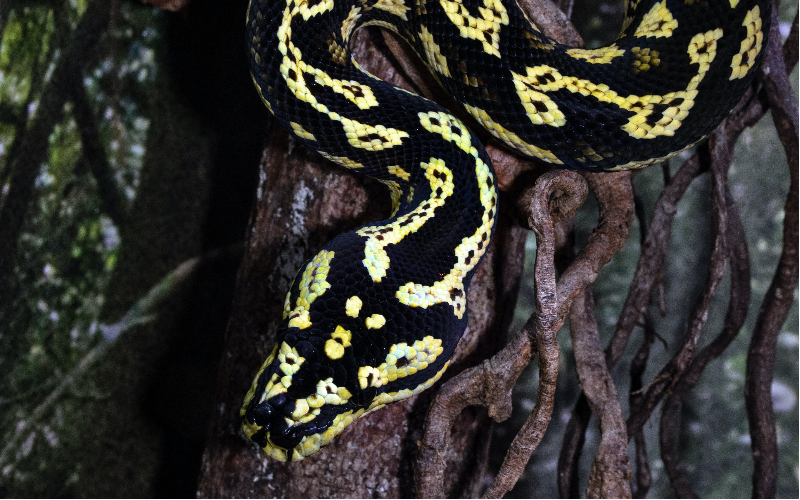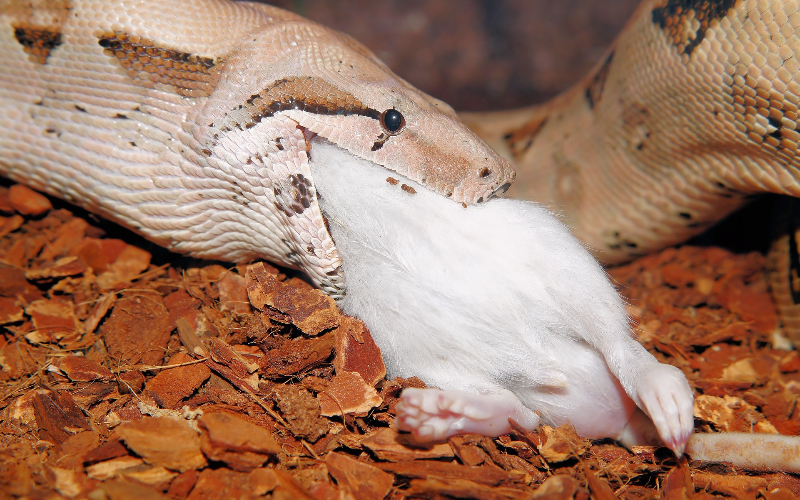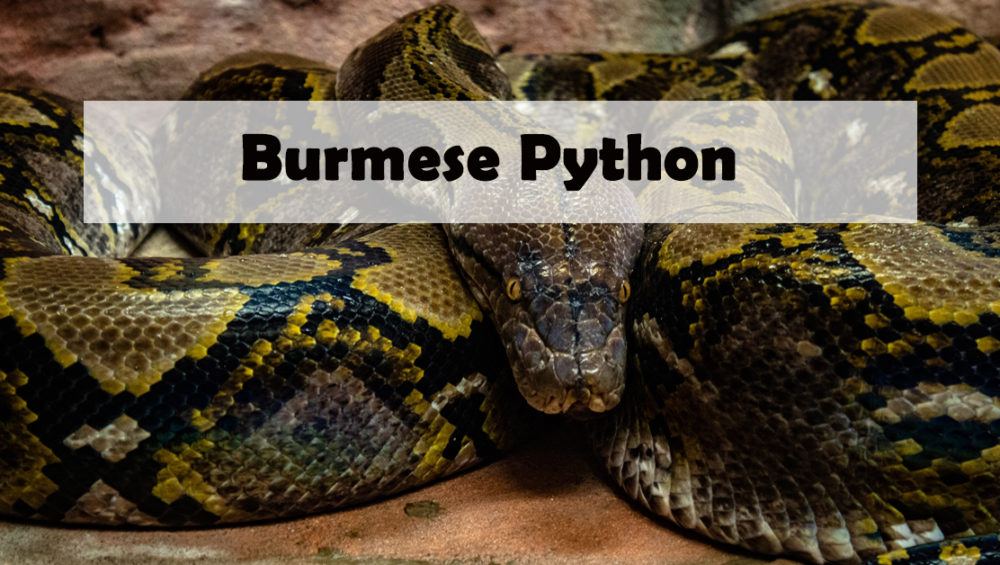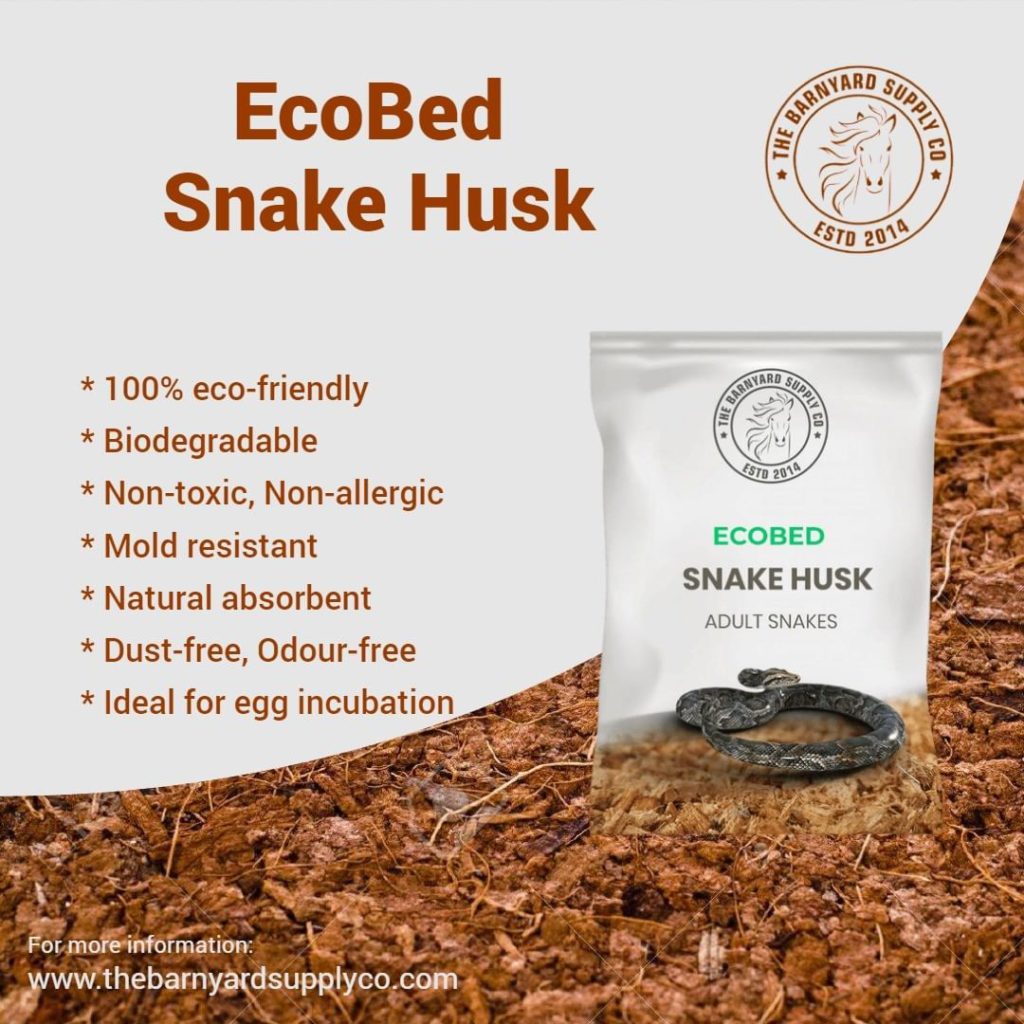One of the largest snakes to slither on this Earth is the Burmese Python. They are mostly found in southeast Asia and span across Thailand, Cambodia, Laos, Vietnam and southeastern China. Burmese Python make an excellent pet because of their docile nature and undemanding requirements.
Table of contents
Behaviour

Burmese Python snakes are stunning creatures with brown and black patterns. They are popular for their attractive appearance, as well as their large size and a calm nature. They are great pets for the right owners. They are however unsuitable for beginners and are better left in the wild. They’re large snakes that are both costly to keep and potentially dangerous. You have to make sure that you have enough space to keep Burmese Python. Owner needs to be very careful when handling Burmese Python, owners have died due to mishandling these kinds of snakes.
Size and Longevity
Burmese Pythons are one of the largest python species in the world. Generally, females are larger than males and they can grow up to 15 feet. Males are somewhat smaller and more slightly built. In captivity, some Burmese pythons have grown to be over 20 feet long and weigh well over 200 pounds. With proper care these snakes can live well over 20 years. There are some reports of specimens living nearly 40 years.
Burmese Python Growth Chart
| Age | Size | Weight |
Hatchlings | 10-30 inches | 100-115 grams |
| 3 months | 16-40 inches | 190-650 grams |
| 9 months | 40-50 inches | 570-780 grams |
Temperature Requirements
Burmese pythons are typically tropical species, it is important to keep these snakes warmer. These snakes require a basking spot of 31 to 33°C with a thermal gradient fading to about 28°C at the cooler end of the enclosure. To maintain this temperature you can use basking lights, infrared bulbs, ceramic heat emitters, and heating pads.
Humidity

Burmese Pythons humidity should be around 50-60% which can be increased whilst shedding. When they are shedding, a regular misting with tepid water can be provided. A 20-to-30-minute soak in warm water during shedding may also be beneficial to your snake. You can provide a water bowl in a cage but make sure they always have clean water. Hand misting is usually beneficial. If you maintain a humidity level of around 65%, your snake will be able to shed in a healthy way.
Lighting
Burmese Python are tropical species so it is important that they are kept properly warm. During the day, cage temperatures should be in the mid-80s and at night, that should not be lower than 80. During the day, specific basking locations within the enclosure should reach or slightly surpass 95 degrees. Make sure the enclosure has a thermal gradient, with one end warmer than the other, giving the snake a range of temperatures to choose from depending on its demands at any given time.
For Burmese python, no special lighting is required but basic fluorescent bulbs or any heat bulb that gives visible light in addition to heat can be used during the day.
Handling
Usually, Burmese Pythons are large in size. Smaller pythons can be handled freely, but it is recommended that snakes over 6 feet should never be handled alone. When a snake reaches the length of 8 feet, at least two people should be present when it is out. While these animals are usually gentle, they are still unpredictable and powerful. Large snakes over 10 feet should never be handled with less than 3 people. Always keep in mind that mishandling such a massive and powerful creature might lead to disaster.
Housing
Hatchling Burmese Python can be kept in small cages, secure tubs with a hide on one side and a water bowl on the other. But adults require a lot of room space. For male Burmese Python needs an enclosure size of 6ftx2ftx2ft and females will most likely need an 8ftx3ftx2ft enclosure. Burmese pythons are extremely powerful snakes that require a very secure housing. If glass is used in the enclosure, thick laminate glass is recommended as a minimum, with toughened glass being preferred. This will take time and money, so consider your options carefully before purchasing one of these creatures.
Cleaning
Maintain proper temperature, daylight hours and a good nesting location to keep your Python healthy. Cleaning is essential to prevent health problems. Good husbandry and hygiene can be helpful for keeping your snake healthy. Make sure that you keep the enclosure clean. Clean the cage on a regular basis and replace the water. Don’t let the tank’s size deter you from cleaning it!
Burmese Pythons usually defecate 8-14 days after eating and their faeces should be brown and solid. You should take advantage of this opportunity to clean the area more thoroughly and replace the substrate. Their massive cage needs a consistent cleaning routine.
Diet

Snakes should be given defrosted rodent prey of proper size. You can feed them mice, rats and rabbits. Food for Burmese Pythons should be large enough to leave a visible lump in the snake’s belly. Must avoid live food. Newborn Burmese Pythons can eat fuzzy rats or adult mice for first feed. You can feed them every 5 to 7 days a week. As they grow you can increase the size of prey. Adult snakes require a large meal every 4 to 5 weeks to avoid becoming overweight.
Breeding
You do not need to do anything to encourage this, provided they are healthy and the conditions are good, it will happen naturally. If you keep a male and female together, they may breed. A gravid female should be able to lay her eggs in a nesting box. The box should be wide enough for her to spin around completely within. To keep the box damp and humid, you can use moss.
Incubate the eggs at 84o Fahrenheit in an incubator. To keep the humidity around the eggs, we incubate them in enclosed boxes on a moist substrate. The eggs will begin to hatch after around 60 days, and the first babies to emerge will urge the rest of eggs to hatch.
Substrate Nature
There are a wide range of substrates available for Burmese Pythons. The bedding should be one that is easy to clean and helpful for maintaining humidity levels. Newspaper is absorbent, fairly sterile and readily available. Various woods, shavings and shredded substrate products are acceptable too, although they tend to foul in moist environments. Paper is also an option as it is cheap, easy to clean and hygienic. Aspen shaving or cypress shaving is your best option, being fairly cheap and pleasant looking. Pine and cedar shaving must be avoided as they are toxic to snakes.
Substrate Types
Aspen shavings
Aspen shavings make a good substrate for your snake. You can use these shavings with smaller snakes and those that don’t need high humidity. It is soft and comfortable pet bedding. It is super absorbent, chemical free, 100% safe and natural paper bedding. This bedding easily gets moldy. Too much moisture can cause material particles to get under a large snake’s belly scales, causing irritation.
Advantages:
• Affordable.
• Excellent absorbing and clean-up.
• Snakes like to burrow in this.
Disadvantages:
• May need to be changed more often.
• It easily gets moldy.
Cypress Shavings
Cypress Mulch is slightly similar to the Aspen shaving. It is made up of small pieces of wood. It looks attractive and helps to create a natural looking enclosure. It helps to retain moisture. It does not mold easily. Snakes can easily burrow in it.
Advantages:
• It retains moisture.
• It doesn’t mold.
Disadvantages:
• It is an expensive bedding option.
• Mites thrive in cypress mulch.
Coconut Husk
Coconut husk bedding is a completely natural and organic bedding material for your snakes. It is an easily available and low-cost alternative. It helps absorb the odor and locks within the substrate. It is a dust free substrate which is absolutely chemical-free and non-toxic. It doesn’t mold and is very moisture absorbent.
Advantages:
· Highly comfortable material for snakes.
· Odor and Dust free.
· Natural and Organic material.
Disadvantages:
· Doesn’t retain humidity much longer.
· Large pieces of husk can cause irritation.
Newspaper and Paper towel
Newspapers covers are easy as well as cheap. For small cages, paper towels can work superior. It’s versatile and you can place the newspaper on the bottom of the cage. It’s not easy to burrow in a newspaper but shredded paper will resolve the issue. Remove wet or damp newspapers and paper towels, as these can cause skin infections in the snakes.
Advantages:
· It is affordable.
· It is one of the most versatile bedding options.
· More suitable for hatchings.
Disadvantages:
· Adult snakes can’t easily burrow in newspapers.
· Wet or damp newspapers can cause skin irritation for snakes.
Conclusion
Burmese pythons are enormous, gorgeous snakes that can be handled if help is always available while handling adult specimens. This species is docile in general and makes excellent pets. With the exception of feeding time, they are usually slow-moving snakes. If they are not handled or dealt with priority, it can be dangerous.







